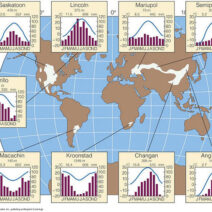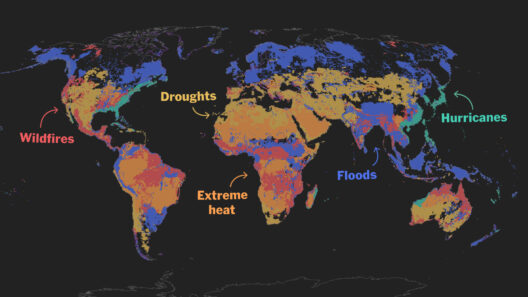Can volcanic eruptions serve as an unintended ally in the battle against global warming? It’s a peculiar notion that at first glance seems counterintuitive. Volcanism, with its potential for devastation, offers an intriguing paradox in the discourse on climate change. As we delve into this multifaceted topic, we will explore the interplay between volcanic activity and the Earth’s climate system, examining how eruptions can influence atmospheric conditions, thereby affecting global warming.
Volcanic eruptions unleash immense quantities of gases and particulate matter into the atmosphere. The most notable of these gases is sulfur dioxide (SO2), which can lead to the formation of sulfate aerosols. These aerosols, when released into the stratosphere, reflect solar radiation back into space and can exert a cooling effect on the Earth’s surface. This phenomenon raises a tantalizing question: could the cooling effect from volcanic eruptions provide a temporary respite from the warming induced by anthropogenic greenhouse gas emissions?
To comprehend this conundrum, one must consider the historical context of volcanic eruptions and their climatic impact. For instance, the eruption of Mount Pinatubo in 1991 is a noteworthy case study. The eruption ejected approximately 20 million tons of SO2 into the stratosphere, resulting in a global temperature decrease of about 0.5 °C over the following year. This significant cooling prompted scientists and environmentalists to reflect on how volcanic eruptions could potentially counterbalance some of the warming caused by human activities.
However, while the cooling effect is tangible, it is imperative to understand that such eruptions are sporadic and unpredictable. Relying on volcanic activity as a countermeasure against global warming creates a precarious and unstable solution. The irregular nature of eruptions presents an inherent challenge: how can we depend on a geological phenomenon that may or may not occur? This randomness complicates the discourse surrounding managing climate change, as the long-term solutions must be more consistent and reliable than mere chance.
Furthermore, volcanic eruptions can cause localized environmental catastrophes, disrupt ecosystems, and lead to severe health hazards for human populations. The immediate effects of ash fallout, air quality deterioration, and the long-term impacts on agriculture raise ethical considerations. Is it justifiable to contemplate eruption-induced cooling when the associated devastation poses a direct threat to life and livelihoods?
Additionally, the cooling effect resultant from volcanic eruptions is temporary. The sulfate aerosols gradually settle out of the atmosphere, and over time, their cooling influence dissipates. This leads to a rapid return to the prevailing warming trend, caused primarily by greenhouse gases. The transient nature of this phenomenon poses a significant challenge in the quest to forge sustainable climate solutions. We must acknowledge that any potential cooling from volcanic activity is but a brief reprieve, not a panacea for the crisis that is global warming.
Moreover, the interaction between volcanic activity and climate change is bidirectional. Increased temperatures may drive higher rates of volcanic eruptions by altering tectonic dynamics, potentially leading to more frequent and intense volcanic activity. This highlights a troubling feedback loop, wherein warming catalyzes eruptions that could temporarily cool the Earth, only for the underlying issues of climate change to persist unabated.
Despite these complexities, it is crucial to explore how understanding volcanism and its climatic impacts can inform broader strategies for addressing global warming. Scientists are studying the possibility of artificially emulating the cooling effects of volcanic eruptions through geoengineering methods, such as solar radiation management. These strategies involve the deliberate injection of reflective particles into the troposphere, reminiscent of natural volcanic eruptions. However, the ethical implications and unintended consequences of such interventions warrant careful deliberation.
There remains an invaluable lesson to be gleaned from observing volcanic eruptions: they underscore the Earth’s dynamic and interconnected systems. While eruptions may provide localized cooling effects, they cannot replace the necessity for substantive, systemic changes in human activities that contribute to climate change. It is imperative to reduce greenhouse gas emissions, transition to renewable energy sources, and implement sustainable practices to address the root causes of global warming.
In conclusion, pondering whether volcanic eruptions can slow down global warming invites a contemplative exploration of nature’s complex mechanisms. While volcanic eruptions do indeed possess the ability to induce temporary cooling effects, they also present a host of challenges and complexities. Ultimately, it is clear that the solutions to climate change cannot be dictated by the whims of geological activity. Instead, we must strive for proactive measures rooted in scientific insight and an unwavering commitment to sustainability. The environment’s fragility demands that we act decisively—not wait for random eruptions to dictate our climate destiny.








